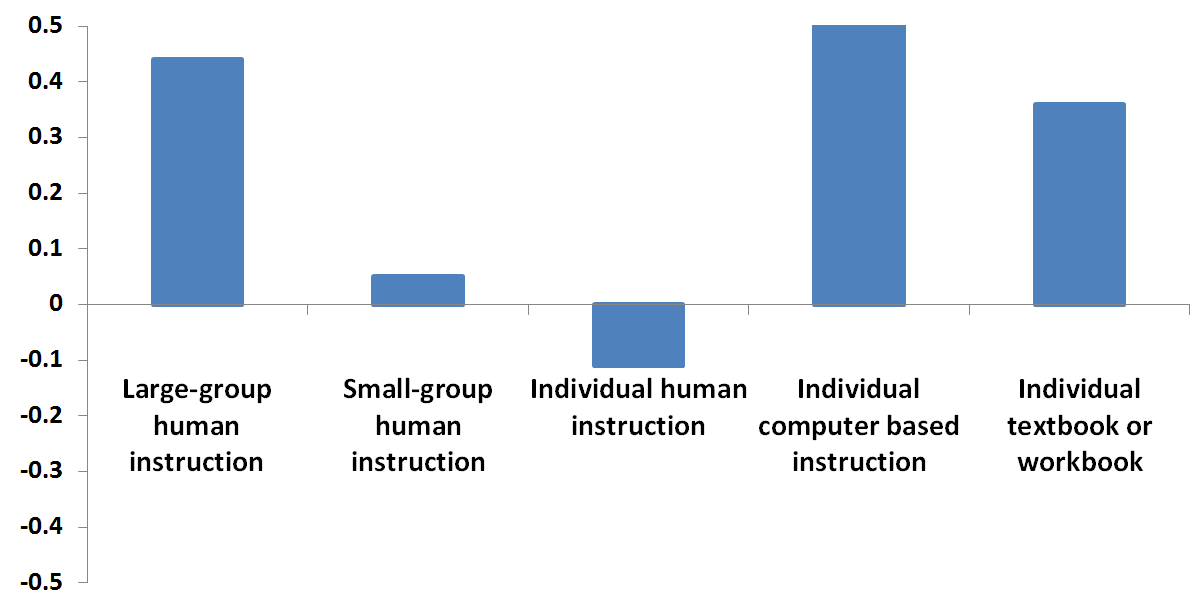What is inside a learner's mind can be very useful to an instructor. Knowing ahead of time misconceptions a student may have allows for a teacher to remediate effectively. Learning benefits from a responsive exchange between a teacher and a student. This is a distinct disadvantage in large classes where a teacher's knowledge of where each student stands is severely compromised. There are computer systems that are now available that are targeted to provide both student modeling as well as adaptive remediation. These are called intelligent tutoring systems.
An intelligent tutoring system (ITS) is not a simple computer based instructional system. Defining characteristics of an ITS have been recently compiled by
Ma and coworkers:
An ITS is a computer system that for each student:
1. Performs tutoring functions by (a) presenting information
to be learned, (b) asking questions or assigning learning
tasks, (c) providing feedback or hints, (d) answering
questions posed by students, or (e) offering prompts to
provoke cognitive, motivational or metacognitive change
2. By computing inferences from student responses constructs
either a persistent multidimensional model of the
student’s psychological states (such as subject matter
knowledge, learning strategies, motivations, or emotions)
or locates the student’s current psychological state in a
multidimensional domain model
3. Uses the student modeling functions identified in point 2
to adapt one or more of the tutoring functions identified
in point 1
With the above definition,
Ma and coworkers then proceeded to do a meta-analysis of ITS to see how effective these systems really are, according to vetted published literature. The first important finding emphasizes the instructional method used to compare against ITS. ITS is effective, but such statement needs to be qualified. In terms of effects on learning outcomes, the following is observed:
 |
| Above graph drawn from data provided by Ma et al. |
What is displayed here is the
effect size of ITS when compared to a specific instructional method. Effect sizes of about 0.3 to 0.5 are considered to be moderate. Clearly, ITS is much more effective than large classes, computer based instruction, and individual reading. The positive effects, however, are not present when ITS is compared to either small classes (less than or equal to 8 students per instructor) or tutoring. The above comparisons truly highlight what ITS is able to do - it can take the pulse of the student and adjust the lessons. Of course, this is likewise possible in small classes as well as individual tutoring sessions.
There are other detailed analysis presented by
Ma and coworkers. One piece that catches my interest is the domain dependence of ITS. How effective ITS is appears to be dependent on the subject as shown in the following figure:
 |
| Above graph drawn from data provided by Ma et al. |
Chemistry stands out with the smallest effect size for ITS. A deeper analysis of the data actually shows that humanities and the social sciences have much higher effect sizes than mathematics and the natural sciences....


Comments
Post a Comment